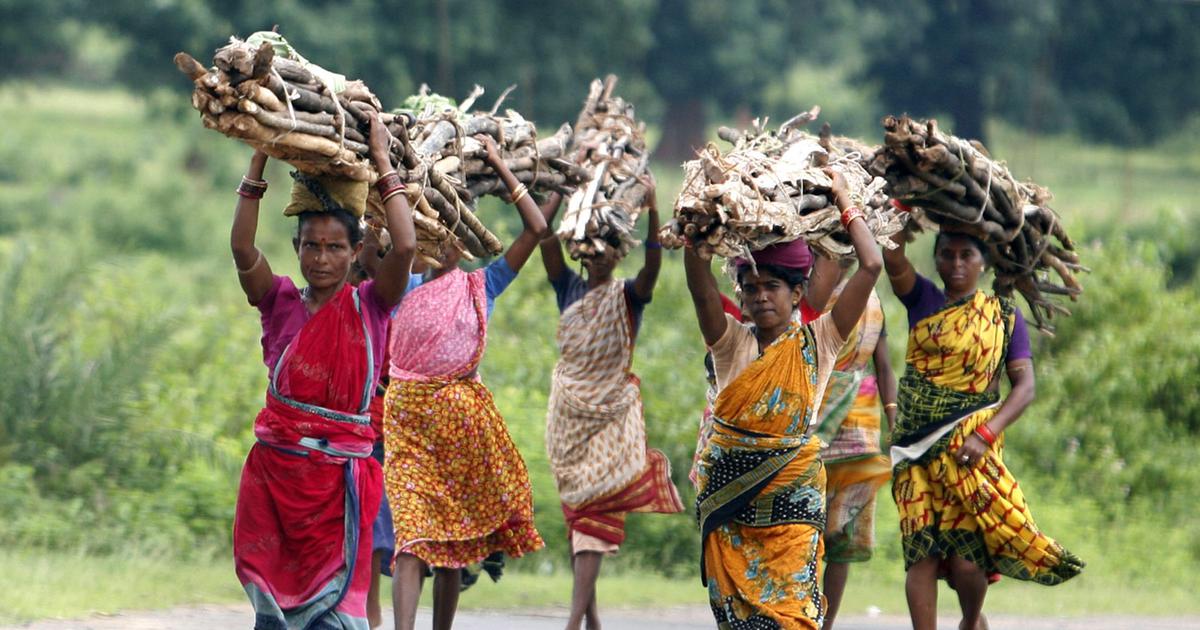Context-
The recent notification of the Thanthai Periyar Sanctuary in Tamil Nadu's Erode district has raised concerns among forest dwellers residing in the vicinity. These communities fear that the notification might lead to the denial of their rights under the Scheduled Tribes and Other Traditional Forest Dwellers (Recognition of Forest Rights) Act 2006 (FRA).
Rights and Restrictions in Thanthai Periyar Sanctuary & Its Implications
The notification of the Thanthai Periyar Sanctuary imposes certain restrictions on traditional practices and livelihoods of forest-dwelling communities. Understanding the implications of these restrictions is crucial for assessing the sanctuary's impact on local populations.
Forest-Dwellers' Apprehensions:
Forest-dwellers surrounding the Thanthai Periyar Sanctuary worry that the notification could signify a threat to their established rights and customary practices. Their concerns stem from historical injustices and the inadequate implementation of laws meant to protect their interests.
Exclusion of Tribal Forest Villages:
Six tribal forest villages have been excluded from the sanctuary, denying them basic rights and facilities. These settlements, encompassing an arbitrary area of 3.42 sq. km, remain outside the sanctuary's boundaries. This exclusion raises questions about the equitable distribution of resources and the recognition of indigenous communities' rights.
Forest Villages and Land Use Conversion:
The conversion of forest villages into revenue villages has been a contentious issue. Despite orders from the Union Ministry of Environment and Forests (MoEF) and the FRA, the process of converting forest villages into revenue villages has been slow and incomplete. This delay deprives forest dwellers of essential services and denies them access to their ancestral lands.
Impact on Grazing Rights:
One significant consequence of the sanctuary's notification is the restriction on cattle-grazing activities. Bargur cattle, a native breed dependent on the Bargur forest hills for grazing, may face obstacles in accessing their traditional grazing grounds. This restriction not only affects the livelihoods of pastoralist communities but also disrupts the ecological balance of the region.
Legal Framework and Enforcement:
The Madras High Court's decision to impose a ban on cattle grazing in forests, except for national parks, sanctuaries, and tiger reserves, highlights the conflict between conservation efforts and traditional practices. Despite provisions in the FRA recognizing the grazing rights of pastoralist communities, the enforcement of bans contradicts these legal protections. The need for a balanced approach that considers both conservation goals and the livelihoods of forest-dwelling communities is evident.
Implementation of Forest Rights Act: Challenges and Failures
The Forest Rights Act (FRA) of 2006 was enacted to address historical injustices and recognize the rights of forest-dwelling communities. However, the implementation of the FRA has faced numerous challenges, particularly in states like Tamil Nadu.
Slow Progress in Implementation:
Tamil Nadu's track record in implementing the FRA has been disappointing. Despite the mandate to recognize and protect forest rights, the state has made minimal progress in issuing individual and community titles. As of September 2023, only a fraction of forest areas have been recognized under the FRA, indicating systemic failures and bureaucratic hurdles.
Violation of Tribal Rights:
The violation of tribal rights under the FRA constitutes a grave injustice and is punishable under the Scheduled Castes and the Scheduled Tribes (Prevention of Atrocities) Act, 1989. However, such violations persist due to the reluctance of state authorities to adhere to legal mandates and uphold the rights of marginalized communities.
Legal Framework and Conflicting Legislations
The legal framework surrounding the establishment of protected areas, including national parks and sanctuaries, is governed by various legislations such as the Wildlife (Protection) Act 1972 (WLPA) and the Forest Rights Act 2006 (FRA). Understanding the interplay between these laws is essential for ensuring the equitable management of natural resources.
Conflicts between WLPA and FRA:
The WLPA provides for the notification of sanctuaries and national parks, aiming to conserve wildlife and biodiversity. However, the FRA supersedes provisions in the WLPA that contravene forest rights recognized under its purview. This conflict underscores the need for harmonizing conservation efforts with the protection of indigenous rights.
Role of Gram Sabhas:
The FRA empowers gram sabhas to determine and recognize forest rights, signaling a shift towards community-based governance of natural resources. However, the effective functioning of gram sabhas is contingent upon state support and institutional capacity-building. Strengthening the role of gram sabhas is imperative for democratizing decision-making processes and ensuring the participation of marginalized communities.
Historical Injustice and the Forest Rights Act
The enactment of the Forest Rights Act (FRA) in 2006 was a response to historical injustices perpetrated against forest-dwelling communities. The legacy of colonial-era policies and the consolidation of state forests marginalized indigenous populations, necessitating legislative reforms to rectify systemic injustices.
Colonial Legacy and Land Dispossession:
The colonial-era forest policies led to the dispossession of indigenous communities from their ancestral lands, depriving them of their livelihoods and cultural heritage. The Forest Rights Act sought to address these injustices by recognizing and protecting the customary rights of forest-dwelling communities.
Recognition of Indigenous Rights:
The FRA acknowledges the historical and cultural ties of forest-dwelling communities to their traditional lands, affirming their rights to access and manage forest resources sustainably. By devolving decision-making authority to gram sabhas, the FRA fosters participatory governance and empowers marginalized communities to assert their rights.
Conclusion
In conclusion, the notification of the Thanthai Periyar Sanctuary and the broader challenges in implementing the Forest Rights Act underscore the complex interplay between conservation priorities and indigenous rights. Addressing these challenges requires a multi-faceted approach that prioritizes equitable resource distribution, community participation, and legal reforms to uphold the rights of marginalized populations.
|
Probable Questions for UPSC Mains Exam- 1. How do the restrictions imposed by the notification of the Thanthai Periyar Sanctuary affect the livelihoods of forest-dwelling communities, and what are the implications for their traditional practices? ( 10 Marks, 150 Words) 2. What are the key challenges in the implementation of the Forest Rights Act in states like Tamil Nadu, and how do they impact the rights of indigenous populations living in forest areas? ( 15 Marks, 250 Words) |
Source- The Hindu







